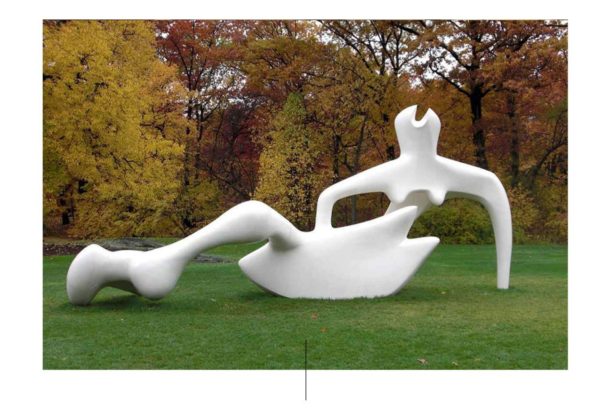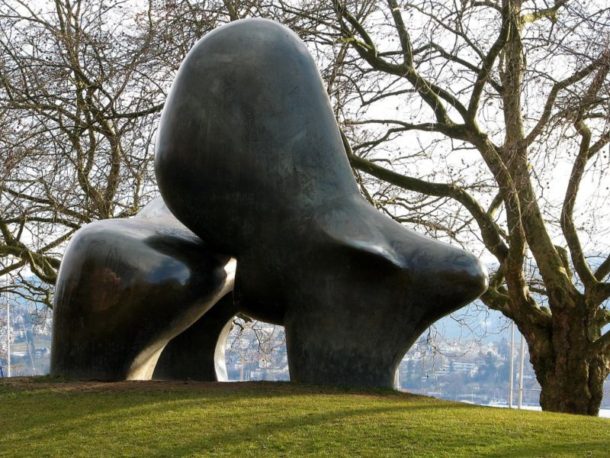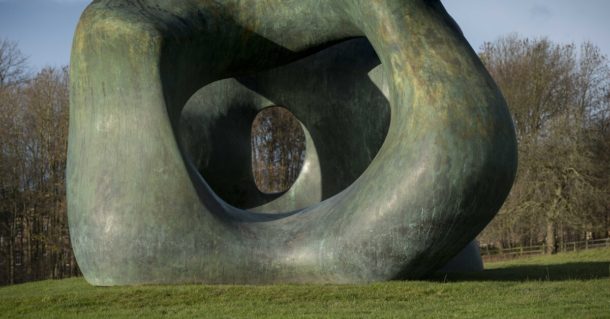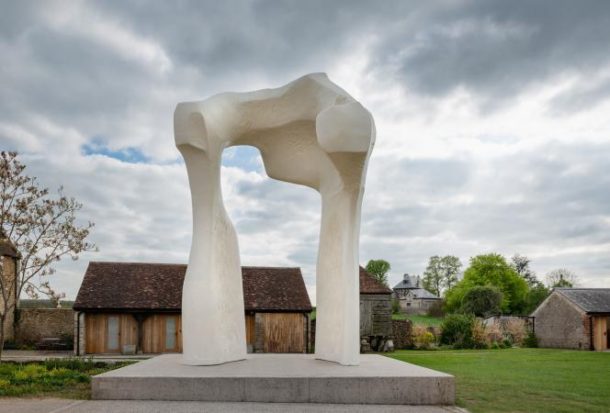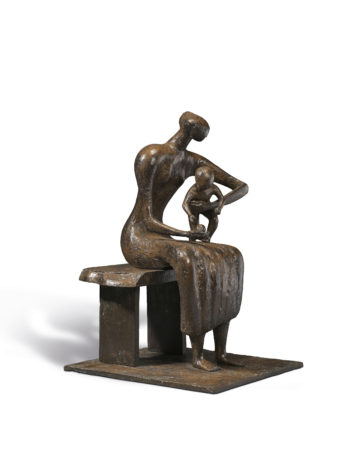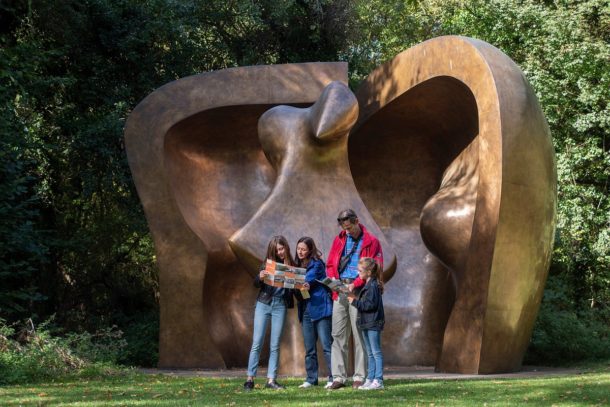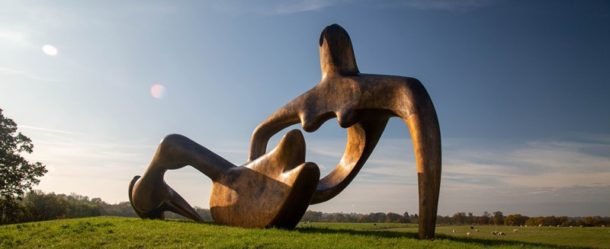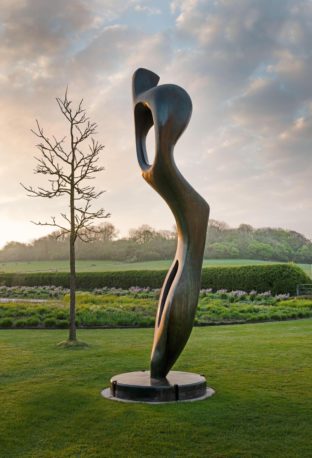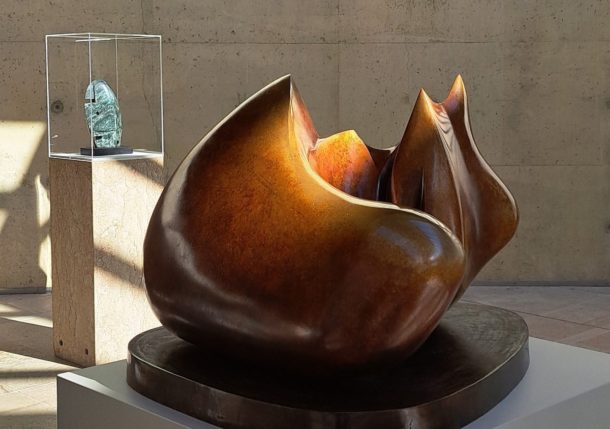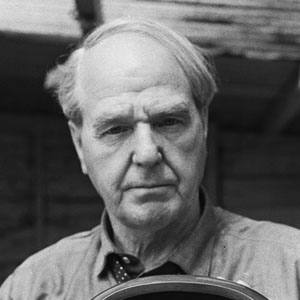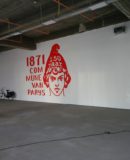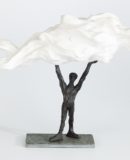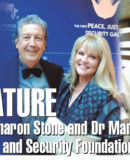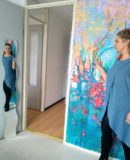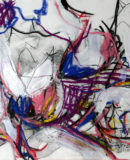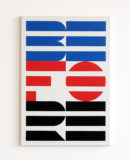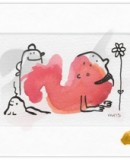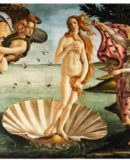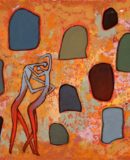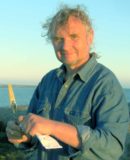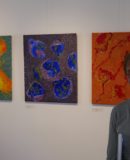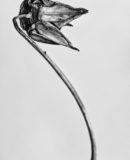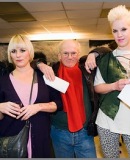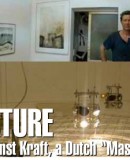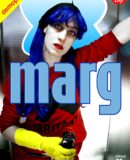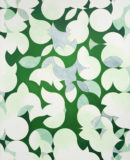World Fine Art Professionals and their Key-Pieces, 434 - Henry Moore
World Fine Art Professionals and their Key-Pieces, 434 – Henry Moore
In Beelden aan Zee in The Hague I saw the exhibition Henry Moore – Form and Material. Henry Moore is one of the most important English artists of the twentieth century. His fascinating sculptures balance on the dividing line between figuration and abstraction and are still a source of inspiration for many artists.
The exhibition focuses on the influence of nature on his work. He largely derived his unique formal language from objects found during walks, such as stones, bones and shells polished by weather, wind and water. Such objects showed him not only the most important principles of form and rhythm, but also how nature itself works as a sculptor.
Shelter drawings
Since the 1920s, Moore has participated in numerous exhibitions, regularly sold work, received commissions and in this way acquired a name as an important avant-garde sculptor.
However, the Second World War temporarily halted these positive developments. Henry Moore was forced to accept a position as a war artist. In this capacity he made moving drawings, so-called shelter drawings, of Londoners who took shelter in underground stations from the bombings.
Figure groups
In the 1950s he made larger figure groups. Prices for his work rose significantly and his fame as an international artist continued to grow. In later years he was commissioner of both the Tate Gallery and the National Gallery and received a large number of prizes and honorary degrees.
Moore’s work is present in all major museums worldwide and is displayed in public spaces. In the Netherlands he is represented in leading museum collections, including those of the Stedelijk Museum Amsterdam, Kunstmuseum Den Haag, Museum Arnhem and Museum Kröller-Müller.
The Perry Green estate
The exhibition is produced in close collaboration with the Henry Moore Foundation. The foundation not only conserves his sculptures and drawings, but also manages his house, studios, extensive archive and surrounding lands.
Just an hour’s train journey from London lies the idyllic town of Much Hadham in the county of Hertfordshire. Nearby, in the typical English countryside with extensive oak forests, rolling fields and hedgerows, lies the Perry Green estate, former home and workshop of Henry Moore (1898-1986). In 1977, the artist transferred it to the Henry Moore Foundation, which would manage his estate.
The carefully landscaped park landscape with trees, shrubs and colorful flower borders provided the ideal environment for his sculptures.
The Hoglands house
Today, the Henry Moore Studios & Gardens operate as a sculpture garden, gallery and museum for seven months during the year. England’s most important modernist sculptor was forced to settle there in 1940 after his studio and home in London were damaged beyond use during an air raid by a bomb explosion.
Friends who lived in the area pointed out to Moore and his wife Irina the possibility of renting the Hoglands house. A house that they initially had to share with a farming family. When the building came up for sale in 1941, they decided to buy it, enabled by the sale of a sculpture with which the down payment could be paid. The surrounding grounds, with a neglected garden, barns and garages that could serve as a studio, were ideally suited for a sculptor whose star was on the rise.
Gradual expansion
At that time, Moore made a name for himself as a war artist with drawings and sculptures that reached a growing audience.
Whenever possible, the Moores used the proceeds of his work to purchase small plots of land adjacent to their own and gradually expanded the area. Existing buildings were demolished, renovated or renovated, each with its own discipline. A number of them are still available for viewing, including his very first, the Top Studio, located in a former stable, the interior of which has been completely reconstructed according to what the workshop must have looked like in the 1950s and 1960s.
The Yellow Brick Studio can be considered the successor to the previous one when Moore’s ambition required considerably more space. The scale of his work and the number of assignments also grew accordingly. As well as the number of employees he needed to assist him. Moore often used the studio as storage for sculptures, as a showroom for interested buyers and as a place to sculpt in wood or stone. Right next to it there is now a large space, the Exhibition Gallery, where changing, thematic exhibitions are organized.
Swimming pool
The Bourne Maquette Studio is very appealing to the imagination, which Moore himself described as a ‘very important habitat’, a space filled with all kinds of objects found in nature, in fact an endless amount of possible ideas. Here Moore worked on his maquettes, small plaster models that he could easily hold in his hand and shape.
The small, rotating Summer House garden shed, which Moore used as a drawing studio to fill many sketchbooks in the 1950s, is still there. However, it was only used as such for a short time and then functioned as a changing room at the small swimming pool built for daughter Mary.
In the early 1960s, when he started working even more monumentally due to prestigious commissions intended for public space, he had an extra-large studio created, the Plastic Studio, in which he and his employees could prepare sculptures many meters high. The Aisled Barn is a 16th century barn that Moore had specially moved to Perry Green in 1981. It shows large tapestries that Moore had made based on his drawings and executed by specialized weavers.
The Museum Beelden aan Zee, in collaboration with the Henry Moore Foundation, made a well-considered selection from his considerable oeuvre. Based on these, around 70 sculptures and objects, the artistic vision and creative process of one of the most important innovators of modern sculpture become visible. With thanks to Joost Bergman and Museum BAZ.
https://henry-moore.org/studios-and-gardens/ https://www.beeldenaanzee.nl/nlhttps://inzaken.eu/2023/09/05/de-unieke-vormentaal-van-henry-moore/
Disclaimer: The views, opinions and positions expressed within this guest article are those of the author Walter van Teeffelen alone and do not represent those of the Marbella Marbella website. The accuracy, completeness and validity of any statements made within this article are not guaranteed. We accept no liability for any errors, omissions or representations. The copyright of this content belongs to Walter van Teeffelen and any liability with regards to infringement of intellectual property rights remains with the author.

